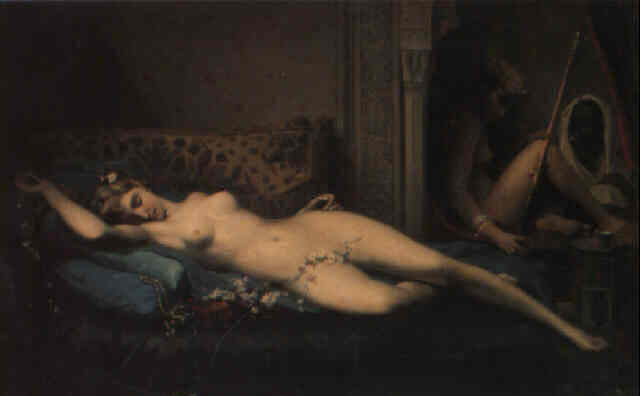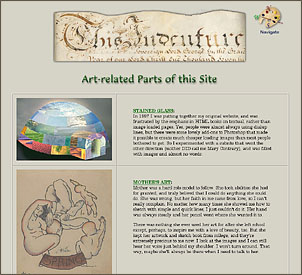Felix Auguste Clement (1826-1888)
[F.A. Clement]
| Pupil of:
| Drolling and Picot |
In the year 1836 a young student at the Ecole des Beaux Arts in Paris, where he had studied under Drolling and Picot, entered into the school competition for
the Prix de Rome and won it. His name was Felix Auguste Clement,
and he was born in 1826 at Donzere, in the Department of Drome. The course of his artistic
life began at the Art School of the city of Lyons in 1843, and in 1848 he came to Paris.
The four years he spent in Italy as a pensioner of the State proved
fruitful in good work. At that time he made a special study of Roman
antiquities and history, upon which he based his picture of "The Death of Caesar" and others.
After his return to Paris, where he found a profitable market as a portrait painter and
for his Italian genre pictures, he became interested in the history
of ancient Egypt, and eventually visited that country, where he made a protracted stay and
gathered much valuable material. His travels in Egypt were probably more extensive than those of
any other modern artist. No ancient ruin was too remote for him to visit, and the mass of studies
he made bore fruit on his coming back to France in a powerful picture of "The Destruction of
Babylon." He varied his historical compositions by many pictures of Oriental every-day life, and other more
familiar subjects, to which his "Morning," a young mother teasing her
babe with a spray of ripe cherries, belongs. He took his first medal in 1861, and some ten
years ago settled in Brussels, where he had been made a professor at the Academy.
A part of F.A. Clement's labor during his long sojourn in Egypt was in painting pictures for the
uncle of the Khedive. He was only partially paid for these, and after his return to France
instituted a long and costly suit against the old Egyptian voluptuary for the balance.
Unfortunately for him the Khedive was deposed and pensioned off in exile, so the poor artist
had only his trouble for his pains, for the ruin of Halim Pacha, the uncle, followed his nephew's
deposition. One of the last pictures Halim Pacha ordered from him was a portrait of a new
Circassian slave whom he had bought, but the artist refused to deliver it and took it to
France with him, where he finished and sent it tot he Salon of 1880. It proved extremely
successful, and won the artist much merited credit. "A Circassian Woman in the Harem" is
now in one of the French provincial museums.
Previous Artist Next Artist







![]() Copyright © 2007, Mary S. Van Deusen
Copyright © 2007, Mary S. Van Deusen